


Member of Russell Bedford International, a global network of independent professional service firms.
Individuals with disabilities and parents of children with disabilities may qualify for a number of tax credits and other tax benefits. Listed below are several tax credits and other available benefits if you or someone listed on your federal tax return has a disability.
Since a change in the law more than 35 years ago, taxpayers (or spouses when filing a joint return) who are legally blind have been eligible for a standard deduction add-on. Thus, for 2021, if a taxpayer is filing jointly with a blind spouse, they can add $1,350 to their standard deduction of $25,100; if both spouses are blind, the add-on doubles to $2,700. For other filing statuses, the additional amount is $1,700. In addition, while being age 65 or older isn’t a disability, it should be noted that there is an “elderly” add-on to the standard deduction of $1,350 or $1,700, depending on filing status. These add-ons apply only to the taxpayer and spouse, not to dependents.
Certain disability-related payments, Veterans Administration disability benefits, and Supplemental Security Income are excluded from gross income (i.e., they are not taxable). Amounts received for Social Security disability are treated the same as regular Social Security benefits, which means that up to 85% of the benefits could be taxable, depending on the amount of the recipient’s (and spouse’s, if filing jointly) other income.
Individuals with a physical or mental disability may deduct impairment-related expenses paid to allow them to work.
Impairment-related work expenses are ordinary, necessary business expenses for attendant care services at the individual’s place of work as well as other expenses in the workplace that are necessary for the individual to be able to work.
The EITC is available to taxpayers with disabilities and the parents of a child with a disability, even when the child’s age would normally prevent the child from being a qualifying child. The EITC is a tax credit that not only reduces a taxpayer’s tax liability but may also result in a refund. Many working individuals with a disability who have no qualifying children may qualify for the EITC.
Taxpayers who pay someone to come to their home and care for their dependent or spouse with a disability may be entitled to claim this credit. For children, this credit is usually limited to the care expenses paid only until age 13, but there is no age limit if the child cannot care for himself/herself.
Qualified ABLE programs provide a way for individuals and families to contribute and save to support individuals with disabilities in maintaining their health, independence, and quality of life.
Federal law authorizes states to establish and operate ABLE programs. Under these programs, an ABLE account may be set up for any eligible state resident – someone who became severely disabled before turning 26 – who would generally be the only person who could take distributions from the account. ABLE accounts are very similar in function to Sec. 529 plans. The primary purpose of ABLE accounts is to shelter assets from the means testing required by government benefit programs.
Individuals can contribute to ABLE accounts, subject to per-account gift tax limitations (maximum $16,000 for 2022, up from $15,000, which it has been for several years). For years 2018 through 2025, working individuals who are beneficiaries of ABLE accounts can contribute limited additional amounts to their ABLE accounts, and these contributions can be eligible for the nonrefundable saver’s credit.
Distributions to the individual with a disability are tax-free if the funds are used for qualified expenses of the disabled individual.
For more information on the benefits available to disabled taxpayers or dependents, call the experts at Cray Kaiser (630) 953-4900.
The past few tax seasons have been riddled with new tax laws, pandemic logistic and staffing issues, and extended turnaround times by the IRS for processing returns. Although progress has been made, we anticipate another season of backlog for the IRS. This article talks about the issues at play and a best practice for getting your returns filed timely and accurately.
This could be another rough tax season for the IRS and taxpayers. Although this year’s filing season opened January 24, 2022 (the first day the IRS will accept and start processing 2021 returns), the Service still has a backlog of prior year returns to process and is plagued by staff shortages due to the pandemic and reduced funding in the last few years. Even though the majority of 2020 returns were filed electronically, many of those returns still required manual review, resulting in significant delays in the IRS issuing refunds. This was the case with millions of 2020 returns of taxpayers who received unemployment compensation and had filed before Congress passed a law that retroactively exempted up to $10,200 of 2020 unemployment income per filer (that provision has not been extended to 2021). Human review was also required for a significant number of returns on which the Recovery Rebate Credit had to be reconciled with the Economic Impact Payments #1 and #2.
Similar issues are likely to affect 2021 returns, especially those where taxpayers received Advance Child Tax Credit (ACTC) payments and/or Economic Impact Payment #3, both of which must be reconciled on the 2021 return. Thus, to avoid return processing delays it is important to include the correct amounts received when doing the reconciliation. In January, the IRS began issuing Letters 6419 (for the ACTC) and 6475 (for EIP #3) to taxpayers; these letters provide the information needed for making the reconciliation calculations. Be sure you provide these letters to your tax return preparer. Having an accurate tax return can avoid processing delays, refund delays and later IRS notices.
Despite reduced staffing and the continuing pandemic, the IRS projects that for this tax season they’ll process electronically filed returns and pay refunds that are designated to be direct deposited in the taxpayer’s bank account within 21 days of receiving the return. While this turnaround time can’t be guaranteed, the earlier you file, the better the chance that you’ll see your refund within that time frame. If the IRS systems detect a possible error, missing information, or there is suspected identity theft or fraud, the IRS may need to correspond with the taxpayer, requiring special handling by an IRS employee. In that case, it may take the IRS more than the normal 21 days to issue any related refund. Sometimes the IRS can correct the return without corresponding, in these instances the IRS will send an explanation to the taxpayer.
To stop the filing of fraudulent returns, the IRS is prohibited by law from issuing a refund from a return where the Earned Income Tax Credit or Advance Child Tax Credit is claimed until mid-February. However, that doesn’t prevent taxpayers from filing their returns before then.
Taxpayers generally will not need to wait for their 2020 return to be fully processed to file their 2021 tax returns and can file when they are ready. So, if you filed your 2020 return, but the IRS has still not processed it, don’t let that stop you from preparing and filing your 2021 return.
The best advice is don’t procrastinate in filing your return, even though the IRS may be bogged down.
In addition to return processing woes, the IRS has had customer service problems, specifically the lack of enough IRS representatives to answer the phone in response to taxpayers’ questions. Last tax season, because of Covid-19-related tax changes and staffing challenges, more than 145 million calls were received by the IRS phone system between January 1 and May 17, more than four times the number of calls in an average year. Alas, the Service was able to answer only about 10% of those calls, and callers who were lucky enough to have their calls answered generally had extremely long wait times before actually being able to speak with an IRS employee.
The IRS encourages taxpayers to go to the IRS.gov website to search for answers to their tax questions instead of calling the Service, but that often isn’t an adequate substitute for talking personally to a knowledgeable individual. Those who have their returns prepared by a tax pro have the benefit of being able to contact their tax professional with tax questions instead of being frustrated trying to reach or deal with the IRS. Given how understaffed the IRS is, it is more important than ever for taxpayers to have their returns professionally prepared.
If you are an existing Cray Kaiser client and have questions, please give our office a call at (630) 953-4900. If you have forwarded this on to a potential client who has been having troubles preparing their own tax return and would like professional preparation, we are also here to assist them.
For tax purposes, the term “basis” refers to the monetary value used to measure a gain or a loss. For instance, if you purchase shares of a stock for $1,000, your basis in that stock is $1,000. If you then sell those shares for $3,000, the gain is calculated based on the difference between the sale price and the basis: $3,000 – $1,000 = $2,000. This is a simplified example, of course. Under actual circumstances, purchase and sale costs are added to the basis of the stock.
The basis of an asset is a very important concept for tax purposes because it is used to calculate deductions for depreciation and casualties, as well as gains or losses on the disposition of that asset.
It is important to keep in mind that the basis is not always equal to the original purchase cost. It is determined in different ways for purchases, gifts and inheritances. In addition, the basis is not a fixed value, as it can increase as a result of improvements or decrease as a result of credits claimed, business depreciation or casualty losses. Below is a primer on how basis is determined in various circumstances.
Cost Basis – The cost basis (or unadjusted basis) is the amount originally paid for an item before any improvements, as well as before any credits, business depreciation, expensing, or adjustments as a result of a casualty loss.
Adjusted Basis – The adjusted basis starts with the original cost basis (or gift or inherited basis) and then incorporates the following adjustments:
Example: You originally purchased a home for $250,000. You added a room for $50,000, installed an electric solar system for $25,000, and replaced the old windows with energy-efficient, double-paned windows at a cost of $36,000. You claimed tax credits of $7,700 for the solar system and the windows, leaving you with an adjusted basis of $353,300 for your home. ($250,000 + $50,000 + $25,000 + $36,000 = $361,000 – $7,700 = $353,300)
Example: As the owner of a welding company, you purchased a generator for $6,000. After owning it for three years, you sell it to another welder. This was business property and you had taken depreciation of $3,376 over the three years. Your adjusted basis of the generator prior to the sale was $2,624. ($6,000 – $3,376 = $2,624)
Gift Basis – If you receive a gift, you assume the donor’s adjusted basis for that asset. In effect, the donor transfers any taxable gain from the sale of the asset to you (but not necessarily the loss).
Example: Your mother gives you stock shares that have a market value of $15,000 at the time of the gift. She originally purchased the shares for $5,000. You assume your mother’s basis of $5,000. If you then immediately sell the shares, your taxable gain is $10,000.
There is one significant catch. If the fair market value (FMV) of the gift is less than the donor’s adjusted basis and you then sell it for a loss, your basis for determining the loss is the gift’s FMV on the date of the gift.
Example: Let’s again assume your mother purchased stock shares for $5,000. However, this time the shares were worth $4,000 when she gave them to you, and you subsequently sold them for $3,000. In this case, your tax-deductible loss is only $1,000. (The sale price of $3,000 minus the $4,000 FMV on the date of the gift.)
Inherited Basis – Generally, a beneficiary who inherits an asset uses the asset’s FMV on the date of the owner’s death as the tax basis. The tax on the decedent’s estate is based on the FMV of the decedent’s assets at the date of death.
Example: You inherit your uncle’s home after he died in 2020. Your uncle’s adjusted basis on the home which he purchased in 1995 was $50,000, and its FMV was $400,000 when he died. Your basis on the home is equal to its FMV or $400,000.
Example: You inherit your uncle’s car after he died in 2020. Your uncle’s adjusted basis in the car which he purchased in 2015 was $50,000, and its FMV was $20,000 at his date of death. Your basis in the car is equal to its FMV or $20,000.
An inherited asset’s FMV is very important because it is used to determine the gain or loss after the sale of that asset. For vehicles, online valuation tools such as the Kelly Blue Book can be used to determine FMV. The value of publicly traded stocks can similarly be determined using website tools.
For most other assets, like real estate or family businesses, valuations generally require the use of certified appraisal services. The valuation team at Cray Kaiser is well versed in assisting clients with these more complex assets. If you have questions about your tax basis or business valuation and want to discuss how it might affect your tax situation, please call us at (630) 953-4900.
Did you know that tax planning can affect your future Medicare premium costs? If not, you are not alone. Part B and Part D premiums are determined by a number of factors, the most important one being your Income-Related Monthly Adjustment Amount or IRMAA.
IRMAA was put in place to require wealthier participants to share more in the cost of Medicare premiums. How exactly is “wealthier” determined? This may surprise you – it’s based on your income from two years prior to the time the premium is determined. In other words, your 2022 premiums will be based on your 2020 tax return. For single individuals, the cost of your premiums will increase if you report 2020 modified adjusted gross income (MAGI) in excess of $91,001. For a married couple, a MAGI in excess of $182,001 will result in higher premiums. Below is a chart outlining Part B premiums for 2022:
HOW MODIFIED ADJUSTED GROSS INCOME (MAGI) IMPACTS MEDICARE PREMIUMS

IRMAA is particularly harsh because it operates on a “cliff”. One extra dollar of MAGI can be very costly. Consider a couple who has a MAGI of just over $170,000. Their premiums are more than $100 per month higher than a couple who has a MAGI just under $170,000. Managing your MAGI is key to managing the cost of your Medicare premiums. So how can you plan?
Converting a traditional IRA to a Roth IRA is not ideal in your later years, specifically because of IRMAA. A conversion is considered additional income under IRMAA and could quickly propel you into a higher MAGI with the associated higher monthly premium. However, performing a Roth conversion well before your Medicare years is a great planning tool to avoid IRMAA issues. Why? Because qualified Roth IRA distributions are not included in your MAGI. Also, by shifting assets out of your traditional IRA, you are reducing the required minimum distributions that you’ll need to take during your retirement years.
While we don’t have complete control over life events, it is possible to control your future income. To the extent it makes tax sense to do so, consider accelerating other income items ahead of your Medicare years. For example, you may consider selling appreciated assets earlier than two years before you claim Medicare. The capital gain is included in MAGI, but your effective federal tax rate on the gain could be as low as 0%.
Working with your financial advisor to ensure that you understand how your holdings impact your MAGI is important as well. There are some holdings that are still good investments but are more tax-efficient than others. We can help if you have questions about tax planning in association with IRMAA considerations. Just call our office at (630) 953-4900.
Is Your QuickBooks company file ready for 2022? Here are three things you can do to put things in order.
The beginning of the year is always transitional. You’re trying to wrap up everything that didn’t get done during a hectic December. At the same time, you have to jump into the new year and start doing your regularly scheduled work. It can be hard to tell sometimes which year you’re working on.
Don’t forget about QuickBooks while you’re wrapping up 2021 and looking ahead to 2022. You probably don’t want to put another item on your to-do list, but any steps you take now to ready the software for the new year will pay off later. Once you start entering transactions, placing orders, and welcoming new customers, it will help tremendously to begin with a clean slate.
Here are some suggestions to help complete the work you started in 2021.
Bills can slip through without being paid in December because there’s so much going on. This applies to both you and your customers. You need to determine what’s owed to you and what you owe. Generate these four reports in QuickBooks:

One collection method you can use in QuickBooks if you don’t want to communicate directly with overdue customers is to send statements.
You’ll have to decide how hard you want to lean on customers who are late paying their bills when it’s so early in the year. Certainly, if customers are more than 60 days late (30 days if they have sizable balances), you may want to make a phone call or at least send a personalized email asking them to fulfill their obligations.
But you can also send statements. These documents provide details of financial activity between you and your customers for a given period. Open the Customers menu and click Create Statements. Look over all the options available (see image above or below) and select your preferences. If customers don’t respond to your statements within 10 days, then it may be time for a phone call.
It may have been a while since you’ve done this, but it’s important to regularly check inventory – especially if you had a busy holiday season. The best way to start this is to open the Vendors menu, scroll down and hover over Vendor Activities, and click Inventory Center.
If you don’t have a lot of inventory, you could just highlight each entry under Active Inventory, Assembly on the left. The window that opens on the right side of the screen provides an enormous amount of detail about each item. If you sell a lot of different items, that will take too much time. In that case, the QuickReport can be helpful.

You can get a lot of information about individual items you sell in QuickBooks’ Inventory Center.
Tip: If you need to adjust the quantity you have on hand, click the down arrow next to Manage Transactions in the lower left and select Adjust Quantity/Value on Hand. You might consult with us if you’re running into this problem, and we can go over inventory issues with you.
January is also a good time to be thinking about how you can better use QuickBooks in 2022. We tend to learn how to use the tools we need and not explore any further when we’re using any kind of software. QuickBooks is a robust program, make sure you are taking full advantage of what it can offer.
For example, there are two tools that can have a tremendous impact on your daily workflow, your ability to get paid faster by customers, and your understanding of where you stand financially every day.
We know you may still be catching up from the holiday break right now. But if you need Cray Kaiser’s help getting your QuickBooks in order, please reach out. We’re always available to set up a consultation.
You already know we at Cray Kaiser thrive on the personal relationships we develop with our clients. But even the best relationships can benefit from the use of technology. That’s why we developed our online portal – to allow us and our clients to safely and securely share the documentation we all need, especially during tax season. It is easy to navigate, however, if you run into difficulties, the following tips and tricks should help.
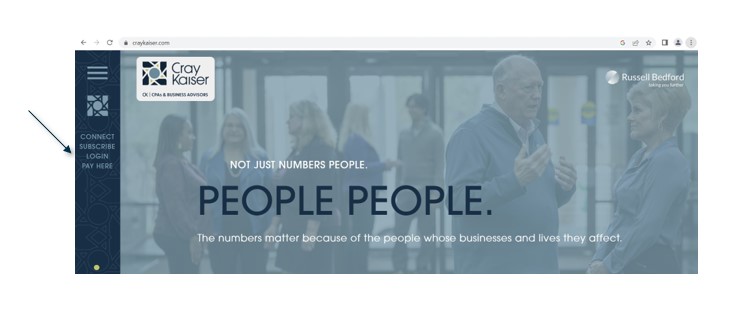
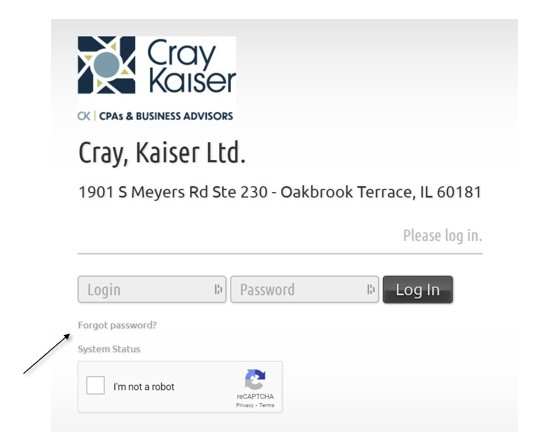
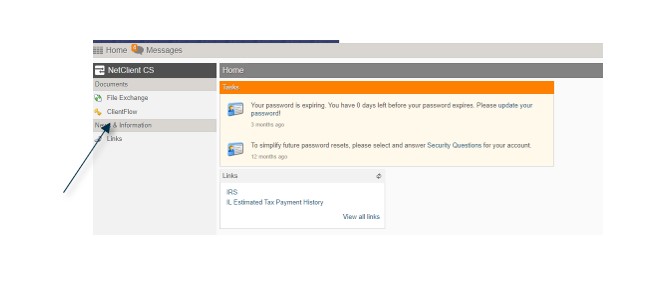

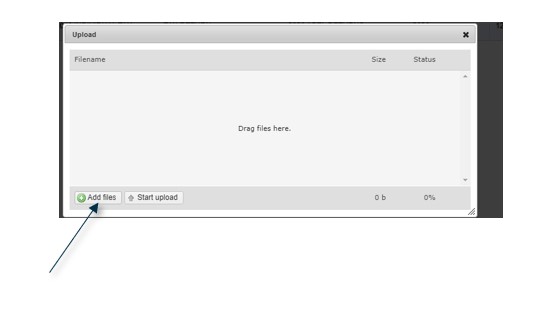
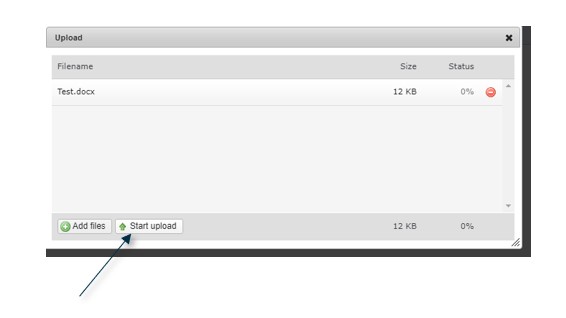

We hope these instructions help you to navigate our online portal. However, if you still have questions or issues, please don’t hesitate to contact us at 630.953.4900.
As we dive into gathering documents for this year’s tax prep, now is the perfect time to re-organize your business and/or personal files. Below are some ‘general’ record retention guidelines to help you sort through your piles of papers. The IRS requires every taxpayer to keep adequate records and make them available upon request. If you fail to keep adequate records, the IRS may disallow deductions and access a penalty so sort wisely!
While purging, keep in mind identifying information can often be found on those accounting and legal documents you will want to discard, such as name, birth date, address and social security numbers. Any confidential or personal items you plan to toss should be SHREDDED to safeguard your privacy and identity.
First, take a records inventory and place items in broad categories (for example: operations, accounting, tax, and legal). Then each year moving forward you can apply documents in the categories consistently. By taking the time now to index and archive documents, you won’t need to guess which of the 10 boxes has the one document you are looking for in the future. Especially because we all know it will be in the last box you look! Again, make sure to SHRED all documents that exceed your retention policy.
The following general guidelines can help you develop your own retention timeline policy.
Keep indefinitely:
Keep seven years:
Keep three years:
Keep indefinitely:
Keep ten years:
Keep seven years:
If you need additional help deciding which records to keep and which to toss, give us a call at (630) 953- 4900.
Some in Congress have proposed “free” (i.e., government-paid) tuition for community college attendance. Even if that proposal were to become law, it still leaves parents and their children-students responsible for paying for college and university attendance if the student wants a bachelor or higher degree. Over the years, Congress has provided a variety of tax incentives to help defray the cost of education. Some tax-related education benefits are currently available while others will be beneficial only with long-range planning, and the sooner these plans are implemented, the better.
Education Savings Plans – If your children are below college age, there are tax-advantaged plans that allow you to save for the costs of their higher education. While no Federal tax deduction is allowed for contributions to the plans, they do provide tax-free accumulation of earnings. It, therefore, makes sense that the earlier they are established, the more benefit you’ll get from them. Additionally, state tax deductions of up to $20,000 per year are allowed for certain plans.
In recent years Congress has expanded the definition of eligible expenses 529 Plans can cover to include the following:
Coverdell Education Savings Account—These accounts are actually education trusts that allow nondeductible contributions to be invested for a child’s education. Tax on earnings from these accounts is deferred until the funds are withdrawn, and if used for qualified education purposes the entire withdrawal can be tax-free. Qualified use of these funds includes elementary and secondary education expenses in addition to post-secondary schools. A total of $2,000 per year can be contributed (but is not deductible) for each beneficiary under the age of 18. The ability to contribute to these plans phases out when the modified adjusted gross income of the contributor is between $190,000 and $220,000 for married taxpayers filing jointly, and between $95,000 and $110,000 for all others.
Education Tax Credits—If you currently have a child or children attending college, there are two tax credits, the American Opportunity Credit (partially refundable) and the Lifetime Learning Credit (nonrefundable), that may benefit you. Both are available for qualified post-secondary education expenses for a taxpayer, spouse, and eligible dependents. Both credits will reduce your tax liability dollar for dollar until the tax reaches zero.
Qualifying expenses for these credits are generally limited to tuition. However, if required for the enrollment or attendance of the student, activity fees and fees for course-related books, supplies, and equipment qualify. For those accessing the Lifetime Learning Credit, course materials and supplies are eligible only if purchased directly from the educational institution.
Qualified tuition and related expenses paid by a student are treated as if paid by the taxpayer if the student is a claimed dependent of the taxpayer. So if a third party (most typically a grandparent, but it could be anyone besides you or the dependent) makes a payment directly to an eligible educational institution for the student’s qualified tuition and related expenses, the student would be treated as having received the payment from the third party and would qualify as having paid the tuition and related expenses personally. If the student is your dependent, you could be eligible to claim the credit.
Education Loan Interest—You can deduct qualified education loan interest of up to $2,500 per year in computing AGI. This is not limited to government student loans and could include home equity loans, credit card debt, etc., if the debt was incurred solely to pay for qualified higher education expenses. For 2022, the student loan interest deduction phases out for married taxpayers with an AGI between $145,000 and $175,000 and for unmarried taxpayers between $70,000 and $85,000. These amounts are subject to annual inflation adjustment. This deduction is not allowed for taxpayers who file married separate returns.
While it is possible that Congress may add more tax-related benefits for assisting parents and students to pay for higher education costs, you shouldn’t depend on their actions (or inactions). We recommend starting the planning process as soon as possible, and making sure not to overlook the credits and deductions available for the current students in your family. If you would like assistance in planning for your children’s future education or would like more information about the education benefits available now, please call us at (630) 953-4900.
Throughout 2020 and 2021 we’ve encouraged our business clients to take advantage of the Employee Retention Credit (ERC) that was first introduced in the 2020 Coronavirus Aid, Relief, and Economic Security (CARES) Act and further modified in the Consolidated Appropriations Act of 2021 and the American Rescue Plan Act of 2021. We assisted dozens of clients in realizing benefits from this program, but now that we are past the December 31, 2021 deadline to claim an ERC credit, all attention is now on the tax status of these funds.
The IRS has determined ERC funds are not to be included in an employer’s gross income, rather the credit is subject to “expense disallowance rules.” This means an employer’s wage deduction should be reduced by the amount of the ERC, resulting in a smaller wage expense and essentially rendering the credit taxable.
For businesses who received an ERC in 2021, as indicated above, the IRS has mandated that the amount received from your ERC be a reduction from your expenses, thereby increasing your taxable income. We are reminding all clients who received an ERC to prepare for this impact as they begin tax preparations.
For businesses that received an ERC in 2020, the regulations indicate that the same rules will apply. We are uncertain if the IRS will provide additional guidance, as this could require numerous amended tax returns.
The ERC program provided welcome relief to a number of businesses, but the tax ramifications are complicated. As always, please contact Cray Kaiser at 630-935-4900 for assistance in understanding your specific situation.
In Cray Kaiser’s Employee Spotlight series, we highlight a member of the CK team. We are extremely proud of the team we have grown and are excited for you to get to know them. This month, we’re shining our spotlight on Bohdan Domino.
Bohdan is a staff accountant, and his day consists of working on audits and reviews. He has been with Cray Kaiser for four years, since his father’s accounting practice was acquired by CKL. Bohdan took the acquisition as an opportunity and was excited about being able to work with new clients.
Bohdan attended Villanova University for his undergraduate degree before earning an MST and MSA from DePaul University.
He appreciates that CK is a learning environment, which gives him the opportunity to grow his skills. Working on more advanced audits and with a great team are a plus, too! When asked which of CK’s core values mean the most to him, Bohdan said education, as he is always trying to learn and improve.
Bohdan’s favorite CK group activity is the annual golf outing, which allows him to connect with coworkers in a fun and casual way.
I like to play golf.
My #1 vacation destination would have to be either Tokyo, Japan or Australia to see the great barrier reef before it’s gone.
My favorite TV show right now is Ozark on Netflix.
Pearl Jam
Outliers by Malcom Gladwell and Empire of the Summer Moon by S.C. Gwynne